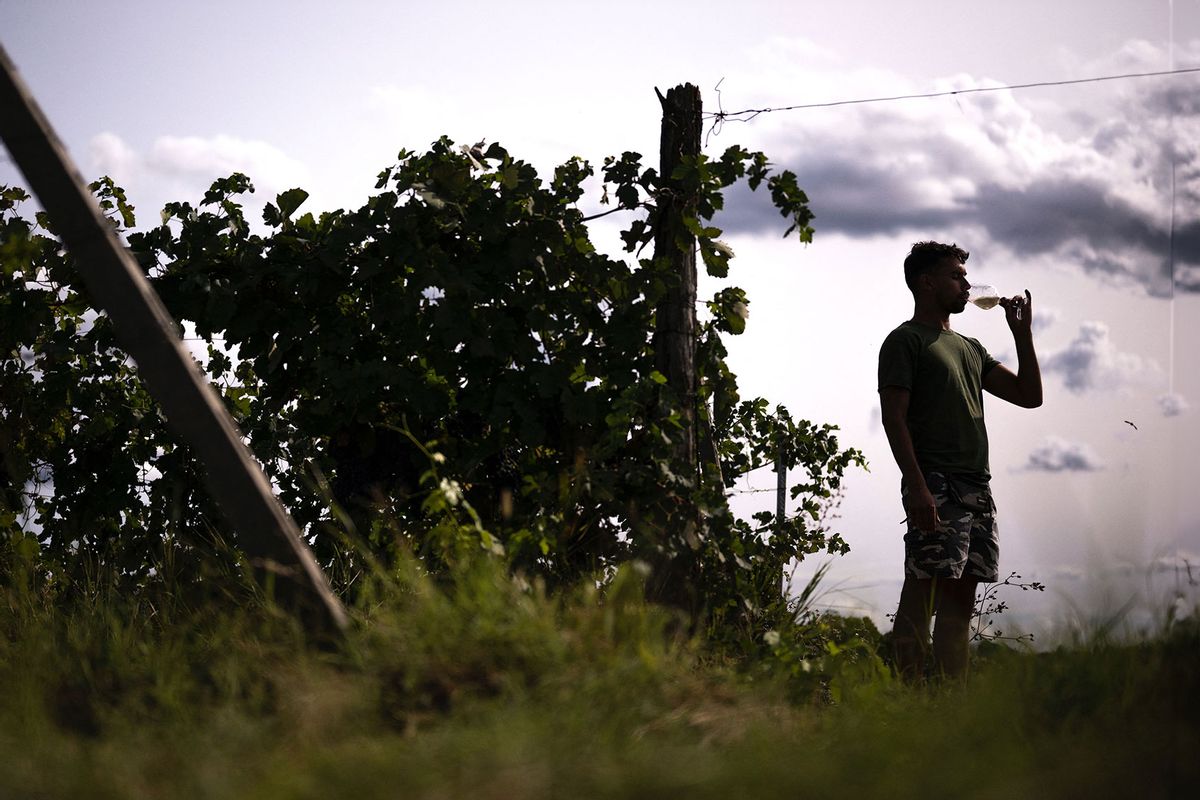When a team of New Zealand scientists analyzed the alcohol produced by the local vineyard Greystone Wines, they found something with profound implications for every wine drinker on the planet. The microbial ecosystems that distinguish literal wine from mere grape juice — the panoply of yeasts, bacteria and fungi — fluctuated significantly between the vintages produced in 2018 and 2021 by the North Canterbury winemaker because of human-caused climate change. Without exactly the right microbial ecosystems, it appears, vineyards either produce low-quality wine or no wine at all.
"Climate change and sustainability were recognized as an essential focus for the future."
Now the problem of climate change and wine that was explored by those scientists (in their case, for an article in the journal PLOS One) is being explored on a broader scale. In its latest annual report, the International Organisation of Vine and Wine (OIV) say that wine production has reached its lowest level in more than six decades, and climate change is a major culprit.
"Extreme climatic conditions and widespread fungal diseases severely impacted many vineyards worldwide, culminating in a historically low global wine production of 237 million hecto litres," the OIV writes. "This marked a 10% drop from 2022 and represented the lowest output since 1961."
In a press release issued shortly before the production of their report, the world's largest intergovernmental organization for regulating wine unambiguously pointed the finger at climate change. While human-caused greenhouse gas emissions are not the sole cause of the wine industry's woes, they are undeniably a major factor.
"Climate change and sustainability were recognized as an essential focus for the future," the organization explained. The sharp decline in production has hit both the Northern and Southern Hemispheres, with OIV authorities saying output is worse than they projected in November. In Europe, for example, Italy suffered a 23 percent dip in productivity, Spain a 20 percent dip, Austria a 6.5 percent dip, Germany a 3.8 percent dip and Hungary a 2.1 percent dip.
All regions suffered from factors ranging from droughts and floods to water shortages and unexpected mildews. Because most wine is mainly produced in mid-latitude region such as California, South Africa, Argentine and the aforementioned European nations, they are particularly vulnerable to fluctuations in heat and humidity.
"About 90% of traditional wine regions in coastal and lowland regions of Spain, Italy, Greece and southern California could be at risk of disappearing by the end of the century because of excessive drought and more frequent heatwaves with climate change," write the authors of a March 2024 paper on climate change and the wine industry from the journal Nature Reviews Earth and Environment. At the same time, there could be trade-offs that benefit residents of cooler latitudes, with warmer temperatures increasing wine cultivation suitability in northern France and the Pacific Northwest.
Want more health and science stories in your inbox? Subscribe to Salon's weekly newsletter Lab Notes.
"About 90% of traditional wine regions in coastal and lowland regions of Spain, Italy, Greece and southern California could be at risk of disappearing by the end of the century..."
Regardless of where one lives, though, climate change is expected to increase heat and decrease water availability. If left unchecked, not only will this make it progressively harder for grapes everywhere, but it also is a breeding ground for diseases and pests that target vineyards. In the Nature Reviews Earth and Environment paper, the authors predicted that if warming is capped at 2° C above pre-industrial levels, almost half of the world's current winemaking regions would be less suitable for growing, with more than a quarter being at the same level and a quarter potentially being more suitable for cultivation.
Yet if temperatures surpass the 2° C threshold, 29% of current wine regions will have conditions too extreme to permit the growth of grapes, even the rise of new suitable growing regions could not possibly offset that loss. Another 41% of current wine regions will also be unsuitable unless farmers adapt their methods.
Speaking to Salon in 2020 about adaptation methods, Anita Oberholster — an associate specialist in cooperative extension of viticulture and enology at the University of California – Davis — said that there are ways of fighting climate change on behalf of wine including conserving water, reusing wastewater, working longer-term on rootstocks and varieties with higher heat and drought tolerance and protecting grapes against the heat. At the same time, there are certain climate change-caused developments from which there are no protections. Take the wildfires that devastated souther California's wine industry in 2020.
We need your help to stay independent
"As far as fires go, better management of fuel sources, looking at barrier sprays to protect grapes against smoke, improved treatment options for wines that are impacted, better insurance options, better risk assessment," Oberholster said. "We are applying for grants to try and link atmospheric data to smoke exposure risk data in vineyards."
While some adaptation is possible, to a large extent the wine industry is simply going to have to accept that the world of the future will be very different from the one to which they have been accustomed for centuries. In an industry where the varied habits of single-celled organisms and the tiniest environmental alterations can make a vast difference, climate change is too much of a game-changer to not have a massive effect.
In the words of the eminent Australian viticulturalist Dr Richard Smart to World of Wine, even relatively small changes in temperature could “effectively rewrite regional reputations and varietal preferences.”
Read more
about climate change

Shares